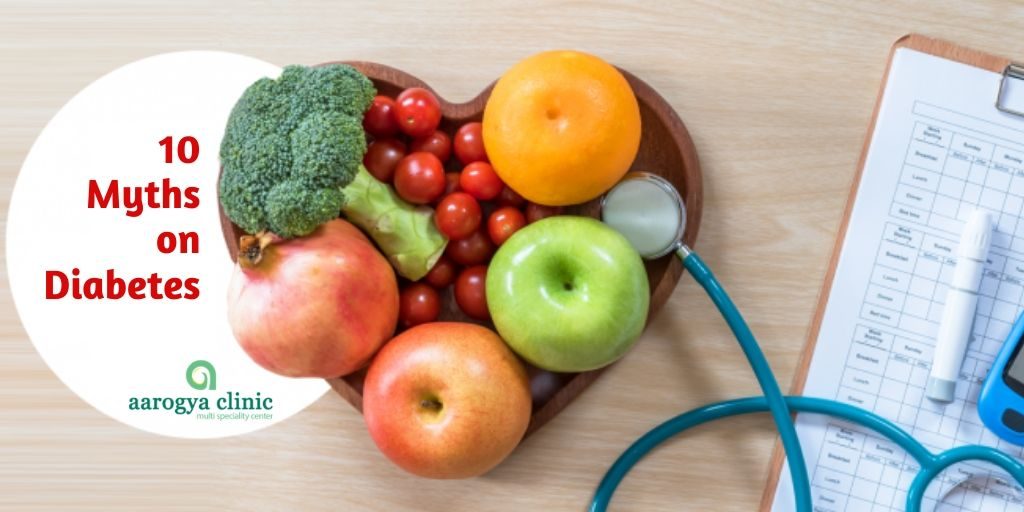
Best Homeopathy Clinic in India | aarogya Clinic
A major global health concern that diabetes has always been, its genetically transferable nature makes it a even more serious challenge to human health. What leaves the medical experts worried more is the fact that youngest patients with its symptoms are aged shockingly 8-9 years!
A disease that serious is not free from myths across the globe that misguides people. Let’s do a fact check by looking into few major ones here.
Myth #1: People with diabetes cannot eat sugar
The Facts: The Best myth you can hear out there!
The good news is that there is no absolute bar on consumption of sugar in various forms. One rule that needs to be followed is that anything always in moderation along with a disciplined insulin intake -will never lead you into trouble and you can keep enjoying all food articles like you always have been.
Myth #2: Diabetes means Insulin production in your body has stopped permanently.
The Facts: Not entirely correct.
Have you come across the terms Type 1 and Type 2 Diabetes? Well when you know what exactly they mean this myth is naturally corrected. Type 1 Diabetes refers to a condition where Pancreas produces very less or no insulin at all.On the other side in type 2 the body is incapable to make use of the amount of insulin produced. Interestingly Diabetes of Type 1 moves genetically into children on the other hand Type 2 is developed in adulthood generally.
Myth #3: Diabetes affects only adults.
The Facts: Knowing the increasing cases of diabetes among children, many parents still do not take it serious.
Diabetes can strike at any age and with equal severity. This is especially true if the diabetic gene runs in your family. Uncontrolled diabetes might lead to threat to your child’s health as they grow up.
Myth #4: Diabetes Type 2 is mild
The Facts: This diabetes myth is widely repeated,but of course it is not the truth. No form of diabetes is mild. Nothing could be further from the truth. Whether your body cannot make insulin or use insulin, both conditions have equally harm on your health if it is not managed properly.
Myth #5: Diabetes mainly effect obese people
The Facts: While obesity can provoke diabetes, but it is not the main reason for diabetic.Recent studies shows that people who have diabetes running in their family history tend to develop the condition than someone who is obese. However, obesity does up the risk factor.
Myth 6: Diabetes treatment always requires insulin shots
The Facts: Among two types of diabetic ,type 1 requires insulin as the body does not make enough insulin.
People suffering from type 2 diabetic,only a limited people require insulin. The rest can be managed by oral medication, a healthy diet, and an active lifestyle.
Myth 7: Carbohydrates are bad for diabetics
The Facts: Carbohydrates are needed for energy.
People with diabetic require some amount of carbs;they have to monitor the kind of carbs they consume.Having healthy carbs like- brown rice, oats, potato, vegetables, and legumes is good. Avoid bread, cakes,biscuits and similarly processed foods.
Myth #8: Women with diabetes cannot conceive
The Facts: While this was correct in earlier times now it is no more a problem.
With advance and modern medicine,women with diabetes both type 1 and type 2 can successfully conceive and give a birth to a healthy baby. All that is required is regular check-ups and a control on blood sugar levels.
Myth #9: Diabetes causes sexual dysfunction
The Facts: Diabetes does not cause sexual dysfunction.
However, uncontrolled diabetes can affect your sexual health and fertility leading to lowered libido and lowered chances of conceiving. As far as diabetic is under controlled by medicines and proper diet,you can lead a normal and happy life.
Myth #10: People with diabetes cannot get tattoos done
The Facts: People with controlled diabetic can get tattoos done.
Having diabetes doesn’t mean you can’t have a tattoo, but before deciding to get it done you must ensure that it is under control.
High blood sugar levels can complicate the healing process and increase the risk of infection.


